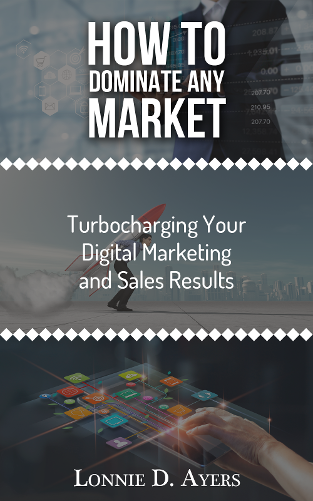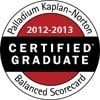You're trying to figure out HubSpot pricing. That's probably why you're here. You want to know the real number and when it actually pays for itself.
Viewing HubSpot pricing as just a subscription cost is a mistake. It's not about buying a single piece of software. It's about building a growth engine for your entire business with a powerful customer platform.
You'll learn how to properly size the platform and plan your budget. We will also cover the hidden costs and ROI factors most buyers miss. This will help you make a smart decision for your company.
Need Sales and Marketing expertise that yields results? Then get our Best Selling book "How To Dominate Any Market - Turbocharging Your Digital Marketing and Sales Results"
How to Size the HubSpot System

Getting your HubSpot pricing right starts with sizing the system correctly. Their model changes sometimes, but the fundamentals do not. The platform is built around several "Hubs" that work together.
HubSpot has two main cost drivers. The first is your subscription tier for each Hub, like the Starter, Professional, or Enterprise plan. The second is your contact volume, which can be a hidden multiplier on your bill, particularly for the Marketing Hub.
Think of it like this. You choose a base plan, but then you pay more as your list of marketing contacts grows. Other things like special add-ons, seats for your sales and customer service teams, or a dedicated IP for email sends can also add to the final cost.
The Hidden Multiplier: Your Contact Database
Your contact list is the biggest variable in your monthly bill for the Marketing Hub. HubSpot's tiers include a certain number of marketing contacts. Once you go over that limit, you start paying for more contacts in bundles.


This is where planning is so important. If you're in a high growth mode, you can quickly move into a new pricing bracket. A good forecast of your lead generation can prevent surprise bills down the road and keep your management team happy.
It's important to maintain good hygiene with your CRM data. Regularly cleaning your lists and separating marketing contacts from non-marketing contacts helps control costs. The HubSpot Smart CRM gives you the tools to manage this customer data effectively.
Pro-Tip: Regularly review your marketing and non-marketing contact breakdown and forecast monthly list growth to avoid surprise charges—always clean your database before renewing or upgrading.
Why You Should Host Your Entire Website on HubSpot
We almost always recommend clients host their entire website on the HubSpot Content Hub. It might seem easier to just plug HubSpot into your existing WordPress site. But doing that is like buying a race car and only driving it in school zones.
You miss out on a massive amount of power. Some companies have complex sites for things like investor relations or extensive customer support portals. For the most part, though, those sites aren't built for lead generation.
If your website isn't 100% on the Content Hub, you lose a lot. The system is much more than just a content management software. Let's break down exactly what you'd be missing.

Powerful Contextual Marketing
Have you ever gotten an email that used your first name? That's just scratching the surface of contextual marketing. Real contextual marketing dynamically changes the webpage a person sees based on what the HubSpot customer platform knows about them.

A returning visitor might see a different headline or call to action. Someone from a specific industry could see case studies relevant to them, a feature powered by the Hub data. This is nearly impossible to do if your site is on another platform.
Increased Marketer Productivity
Your marketers are expensive and their time is valuable. Constantly switching between different platforms is a huge drain on productivity. It takes time to learn HubSpot, but once someone knows the automation software, they are incredibly fast.
I've seen a skilled HubSpot user build an entire marketing campaign in under an hour. This included landing pages, forms, thank you pages, and email sequences with custom email templates. A similar project on a mixed platform could take a highly skilled consultant days to finish.
Better A/B Testing and Analytics
A/B testing is a core part of modern marketing. You test two versions of a page to see which one performs better. Doing this is simple inside HubSpot, but becomes a real headache on mixed systems.
You also lose complete visibility into a contact's activity. When everything is in one place, you can see every page view, email open, and form submission. This gives you a full picture of the customer journey you just can't get otherwise.
HubSpot Professional vs. Enterprise
The difference between the Professional and Enterprise tiers is significant. For many small to medium businesses, the Professional plan is the right place to start. It unlocks the key features you need for a true inbound marketing strategy.
Since contact volume is a major cost, you should know the magic number. It's around 38,000 contacts. When your list gets that big, the math often works out to upgrade to the Hub Enterprise version for the Marketing Hub.
Both premium plans offer a great deal of power, but their target audiences are different. Let's look at what separates these two powerful tiers and their various features.
Why Professional Is the Go To Starting Point
We recommend most of our clients start with Hub Professional. This is where you get the tools for real marketing automation software. You can build automated email sequences using workflows and smart lists.
This is also the level where you unlock contextual marketing. This feature alone can dramatically improve your conversion rates. It helps you show the right message to the right person at exactly the right time.
Smart Forms are another game changer at this level. The form can change based on what you already know about a visitor from their CRM data. This lets you progressively profile leads over time without asking for the same info twice.
When You Need to Upgrade to Enterprise
The Enterprise level is for companies operating at a very large scale. It has all the power of Professional, plus several advanced features. These are built for high volume and complex marketing teams.
Event based triggers are a major feature here. You can set up automation based on specific actions, like someone viewing your pricing page. You can trigger an email, a notification to sales, or a personalized pop up chat with a live chat agent.
Predictive lead scoring is another huge win for sales teams. The system uses machine learning to identify which leads are most likely to close. This helps your sales team focus their efforts on the best opportunities by analyzing buyer intent signals.

Here is a simple table comparing some key features of the Professional vs. Enterprise Marketing Hub plans:
| Feature | Professional Plan | Enterprise Plan |
|---|---|---|
| Marketing Automation | Omni-channel marketing automation | Programmable automation and custom event triggers |
| Reporting | Custom reporting and dashboards | Multi-touch revenue attribution |
| Content | A/B Testing and Smart Content | Adaptive testing and partitioned content |
| Teams | Standard team setup and permissions | Hierarchical teams and field-level permissions |
| Custom Objects | Not included | Included for modeling business data |
The Total Cost of Ownership: Add Ons and Other Hubs
The sticker price for a subscription tier isn't your final HubSpot pricing. The platform is broken into different Hubs and has several add ons. These extras add more functionality but also add to your monthly bill.
For example, the HubSpot platform consists of Marketing Hub, Sales Hub, Service Hub, CMS Hub (Content Hub), and Operations Hub (Data Hub). Many companies also invest in a Commerce Hub. Let's look at the most common additions.
Sales Hub
The sales software, or Sales Hub, starts with a base price for a set number of users. Then you pay for each extra user you add. It provides tools that salespeople find incredibly useful for their daily work.
For instance, they can get notified when someone opens an email. They can also call a prospect directly from a contact record on their phone. This makes follow up quick and efficient, acting like a prospecting agent for the sales team.
Service Hub
The Service Hub is a powerful customer service software designed to help you support and retain customers. Like the Sales Hub, it is priced on a per-user basis. It provides your team with the tools to offer amazing customer service.
Key features include a ticketing system, help desk automation, and the ability to create a knowledge base. You can also implement live chat on your website to assist visitors in real time. This customer service tool centralizes all communication.
Free CRM
HubSpot's CRM is separate from the Sales Hub, and its core functionality is completely free. The free plan lets you store up to one million contacts. For most businesses, this is more than enough space for all of your customer data.
The real benefit is having a single, organized place for all your contact information. So many small businesses struggle with messy contact lists spread across spreadsheets. The free HubSpot CRM fixes that problem immediately.
Useful Add-Ons to Consider
The Reporting Add-On is extremely useful, even with all the analytics built into the HubSpot Smart CRM. It has helped us answer many complex client questions. It saves hours of work that would otherwise be spent in a spreadsheet, especially when analyzing Data Hub data.
If you have an e-commerce site, you might need the transactional email add on. These are emails like shipping notifications. They get treated differently by spam filters and help keep your customers happy.
There can also be a one-time onboarding fee for certain plans. This professional onboarding ensures your team is set up for success. For more complex needs, HubSpot also offers technical consulting and inbound consulting services.
Is HubSpot a Good Fit for Your Business?

You might think we see HubSpot as the solution for every company. That's just not the case. The platform is an amazing tool, but only for the right type of business.
If your product or service sells for less than about $500, it might not be a good fit. Also, it works best for what's called a "considered sale." But even if you don't fit that criteria, the free tools and starter plan can still add a lot of value.
Many people start with a free trial to see how the software works. It's a great way to understand the user interface before committing to a paid plan. You might find that just the email marketing and live chat features from the free HubSpot offer are a huge help.
Do You Have a "Considered Sale"?
This might be a new term for you. A product or service is a considered sale if a customer needs to do research before buying. Think about buying a car or a new management software for your company.
Before the internet, it was hard for buyers to do their own research. They had to rely on salespeople to tell them everything. That has completely changed.
Today's buyers are overwhelmed with choices. They need to do a ton of online research before they even think about talking to a sales rep. An inbound marketing platform using content marketing helps you be the source of that information.
Budgeting for HubSpot and Calculating Your ROI
Now we get to the big question. How do you actually budget for this system? HubSpot pricing can seem high, but you need to think about the return it will generate. We can do some simple math to see if it makes sense.

A simple way to set a marketing budget is a percentage of your revenue goal. Studies by Deloitte show companies spend around 10% of revenue on marketing. Let's use that as a starting point. Let's say your annual revenue goal is $1,000,000. That's about $83,333 a month in sales.
A 10% marketing budget gives you $8,333 per month to spend. The professional level of HubSpot is a chunk of that. That does not leave much for other costs like ad management or the people you need to create AI content and run the system.
But look what happens if your company has a $5,000,000 a year run rate. Now your monthly marketing budget is over $41,000. Suddenly, the cost of HubSpot and an agency to help run the content marketing software becomes very doable.
The point is that your HubSpot cost is only one piece of the investment. You also need to invest in creating content and promoting it. The real power of the system shows up in year two, when all the content you created in year one is still working for you 24/7. Keep in mind that lower tiers do include HubSpot branding on some assets.
Conclusion
Figuring out your ideal HubSpot pricing is about more than just a monthly subscription. It's a strategic choice about how you want to grow your company. The platform is not a magic fix for your sales and marketing problems.
It is a powerful system that requires an investment in people and content. But when it's used correctly, it can become an engine that drives predictable and scalable growth. A HubSpot customer can leverage the full suite of tools to connect with their audience.
Understanding your business goals is the first step to sizing your investment right.
Whether you're a small business on a starter plan or a large corporation on an enterprise plan, the right configuration makes all the difference. Start by evaluating what you need today and where you plan to be tomorrow.
Get a Free One Hour Inbound Marketing Assessment
We are a Hubspot Certified Marketing and Sales partner. We have over 15 years of experience implementing lead generation and sales systems based on the Hubspot Marketing and Sales platform.
We use our custom version of the Inbound Marketing Methodology, literally decades of industry experience and a never ending search for the competitive edge, to help you achieve new levels of business success. Please our book a meeting service to get started.




